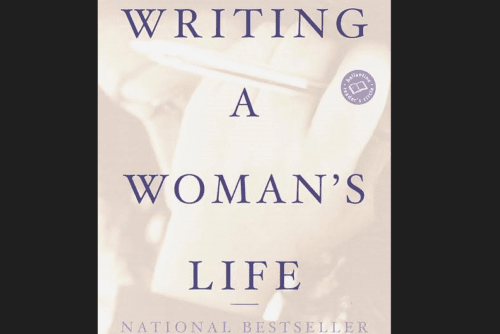Ina Cochran
Ina Cochran (IC) pursued her pregnancy. Despite her drug addiction, Ina wanted to carry her baby to term, rather than seek an abortion. She gave birth to a healthy baby girl. But a problem, one that she did not anticipate, emerged. Medical officials at the Ephraim McDowell Regional Medical Center in Kentucky tested Ina and her baby for illegal drugs. Ina’s test revealed her drug addiction. But the tests also showed the presence of cocaine in her newborn. Hospital staff turned the test results over to police and felony criminal charges were filed by prosecutors.
Regulating women’s reproductive conduct in these cases exposes problematic gaps in the laws and their application, including fleeting and un-sustained interests in the fetuses and babies that result. In some instances the state’s interest in protecting the fetus extends only against the mother. At other times, because of the subjective nature of these prosecutions, prosecutors and other government agents might ignore harms, neglect, and reckless conduct inflicted by fellow state actors, such as police, prison guards, and nurses.
Not surprisingly, the stick approach brings private, intimate matters into the public theatre, creating spectacles of poor, pregnant women and their children.1 These forms of public humiliation such as birthing a baby in a toilet, being shackled during labor, and passing out before being provided adequate pain relief, function to visually inscribe these women’s places in society. If a reproductive social hierarchy exists,2 these women are the condemned—relegated to the bottom both legally and socially. The main point here is not simply that focusing on crack is under-inclusive. Legal regimes could be under-inclusive in a more rational way if there were greater parity with the gravity of harm. However, legislative and enforcement attention to maternal crack use is disproportionate to that of tobacco and alcohol use despite compelling research demonstrating far more serious harm to fetuses resulting from maternal exposure to or use of those substances.
In past work, I have suggested that one approach to address the gaps caused by FDLs might be to equalize punishment. Under this approach the state might criminalize all parental behaviors that result in youth/child/fetus exposure to harmful substances and behaviors whether or not an actual injury or harm materializes. In this way, regulating the risky behavior of parents sheds its gendered focus on women and implicates fathers and boyfriends. It would also implicate wealthier women who abuse prescribed medications during pregnancies, and even ART users. Once the sticks are spread more broadly, their implementation might be less disproportionate, but equally, the unintended social burdens and consequences are illuminated. Or, alternatively, the state might engage in a carrot approach, using education and rehabilitation programs rather than incarceration to help families recover, while not burdening the state with the expense of incarceration and indefinite foster care, as well as the collateral and social costs of children growing up with mothers in prison.
As states codify measures to prosecute women for drug use during pregnancy, what becomes clear is that such rules are not intended to be universalized and applied to all women.3 states appear less interested in an empirically relevant approach to protecting all fetuses even in the context of drug use. Most FDLs disregard drug abuse during pregnancy, which would increase the pool of women under community/state inspection, but instead focus only on illegal drug use. As a result, FDLs can be said to focus more on policing drug choice than focusing on fetal health and well-being. The credibility of this approach is diminished on close inspection. If the legislative focus is truly about the health of fetuses, then drug choice among mothers should be irrelevant. Examined through this lens, policing drug choice is an approach that ensnares pregnant women according to which drugs they use, rather than the fact that they use drugs. This approach can be likened to a form of pruning weeds from the flowers.
But FDL pregnancy policing also ignores the many ways in which fetuses are harmed by behaviors and exposures other than maternal drug addiction, whether legal or illegal. For example, there is a higher incidence of fetal and maternal mortality in poor, racial minority communities where there has been no drug use.4 According to John M. Wallace, Jr., “although the emphasis of pediatricians’ and many other helping professionals’ work focuses on individuals and individual-level behaviors, these behaviors can only be properly examined, diagnosed, and treated when they are understood in light of the community and societal contexts in which they occur.”5 According to a study published in the Journal of Developmental and Behavioral Pediatrics, poverty is more detrimental to a child’s cognitive development than in utero exposure to drugs like crack.6
But my intuition is that drug abuse and addiction are best understood when they are studied and treated, rather than pursued by policies that focus exclusively on policing and punishment. Incarcerating poor women because of illegal drug use is not an inquiry into the breadth of a drug abuse problem among all pregnant women, nor does the policing address the abuse of legal drugs that can harm fetuses. The result is a type of policing with significant race and class overtones, which captures a fragmented picture of drug use among women. Legislators would be wise to consider lessons from the past.
For example, at the turn of the century, opiate and cocaine use was widespread among white women.((Humberto Fernandez, Heroin (Center City, MN: Hazelden, 1998): 16; see also Julian Durlacher, Heroin: Its History And Lore (London: Carlton Books, 2000): 8.)) According to Humberto Fernandez, between 1885-1887, middle- and upper-income white women accounted for 56-71% of those addicted to opiates in the United states.7 The Harrison Narcotics Act of 1914, which later prohibited the use of those drugs, drove much of this conduct underground.8 In an appeal to distinguished members of the medical profession, Dr. John Witherspoon warned of the medical community’s obligation to, “save our people from the clutches of this hydra-headed monster which stalks abroad throughout the civilized world, wrecking lives and happy homes ….”9
Half a century later, use of tranquilizers, amphetamines, alcohol, and prescription medications followed a similar racial and gender pattern. The distinctions are obvious; the use of drugs such as those listed above was legal, and the medications were easy to acquire. Despite drug dependency and abuse of prescribed medications among wealthier women, drug policies in the 1960s were not focused on this type of drug problem.10 Nor have more recent efforts to police maternal drug abuse taken into account the abuse of legal drugs as a public health matter. The disparate state attention and efforts to address maternal behavior among diverse classes of drug abusers results in a distorted picture of maternal drug use and dependency, and ultimately undermines the intent of FDL policies, which are fetus-focused.
- Goodwin, Michelle. [↩]
- See Joel F. Handler, “Constructing the Political Spectacle: The Interpretation of Entitlements, Legalization, and Obligations in Social Welfare History,” Brooklyn Law Review 56 (1990): 899, 929-31; Michel Foucault, Discipline and Punish (New York: Vintage Books, 1977): 30-31, which suggests public punishment serves multiple purposes, including the creation of spectacle, shaming, and the assertion and demonstration of power. [↩]
- See Drug Policy Alliance, “Race and the Drug War.” [↩]
- In other words, the correlation between fetal death among racial minorities where drug use has been present versus when it has not is understudied. [↩]
- John M. Wallace, Jr., “The Social Ecology of Addiction: Race, Risk, and Resilience,” Pediatrics 103 (1990): 1122. [↩]
- Hallam Hurt et al., “Cocaine-exposed Children: Follow-up Through 30 Months,” Journal of Developmental and Behavioral Pediatrics 16 (1999): 29. [↩]
- Ibid. Interestingly, 60% of the heroin related arrests in Portland, Oregon were of Chinese. [↩]
- Fernandez, Humberto. [↩]
- John Witherspoon, “Oration on Medicine: A Protest Against Some of the Evils in the Profession of Medicine,” Journal of the American Medical Association 34 (1900): 1591; See also, Hamilton Wright, “Report on the International Opium Commission and on the Opium Problem as Seen Within the United States and its Possessions,” Senate Document No. 61-377 (1910): 45. For Wright, the opium drug czar of the 1910s, “[o]ne of the most unfortunate phases of the habit of opium smoking in this country [was] the large number of women who have become involved and were living as common-law wives of or cohabiting with Chinese in the Chinatowns of our various cities.” As antimiscegenation laws and social customs, focused on preventing whites from cavorting with blacks and other persons of color, were strictly enforced in the United States until Loving v. Virginia, we can assume that Wright was not concerned about the common law relationships between black women and Chinese men, but instead was referring to white women. Comments like Wright’s were often used to incite racial animus, and in this case, against the Chinese. [↩]
- Drug policies at that time did not penalize wealthier mothers for abusing drugs, nor were these women depicted as neglectful, uncaring, or irresponsible toward their children. [↩]




